Ukrainian radar means of detecting air targets
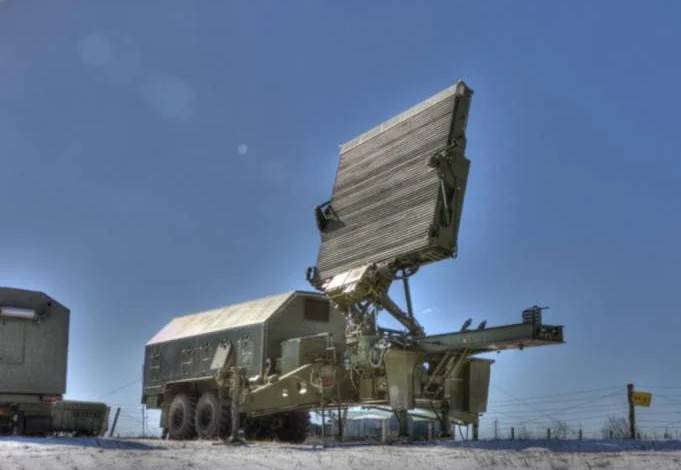
At the time of the collapse of the USSR, a large number of radio engineering units were deployed in Ukraine, designed to control the air situation, issue target designation to anti-aircraft missile forces and guide interceptor fighters.
The headquarters of five radio engineering brigades and their material and technical base were deployed in Vasilkov, Lvov, Odessa, Sevastopol and Kharkov. These brigades included 30 radio engineering battalions and 56 separate radio engineering companies, which were part of the 28th Air Defense Corps of the 2nd Separate Air Defense Army (OA) and the 8th Air Defense OA.
Radio engineering battalions and separate radio engineering companies operated about 800 radars and radars: 5N84, 5N87, P-30, P-35, P-37, P-12, P-14, P-15, P-18, P-19, 5N87 , 55Zh6, 22Zh6, 64Zh6, 19Zh6 and radio altimeters: PRV-9, PRV-11, PRV-13, PRV-16, PRV-17. In addition to radars, which had a greater or lesser degree of mobility, several fixed stations 44Zh6 and 5N69 (ST-67) functioned in Ukraine.
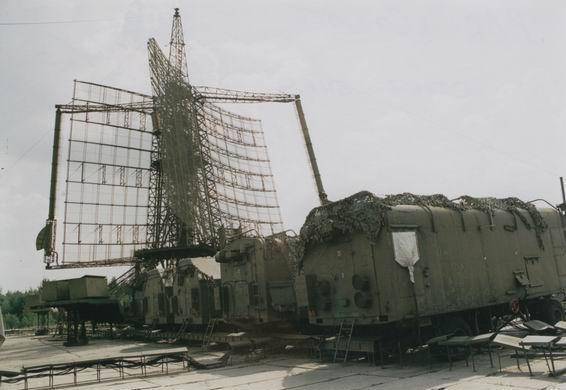
Elements of the 5N69 radar complex
Radar posts around the clock formed a continuous radar field at medium and high altitudes. It was possible to "look" beyond the administrative border of the Ukrainian SSR for 250-300 km. During the “special period”, radar control facilities scanned most of the territory of the republic at low altitudes. All means of RTV ZRV and IA air defense were connected into a single tactical unit by the latest at that time ACS systems Osnova, Senezh and Baikal.
Ukrainian radar means of airspace control in the period from 1991 to 2014
In the 1990s, the top military-political leadership of Ukraine paid very little attention to the development and improvement of the radio engineering troops, which, like the anti-aircraft missile troops, were subordinate to the Air Force. In the first decade after the collapse of the USSR, Ukrainian RTV finished off the Soviet legacy without investing in modernization. However, Ukraine managed to maintain the production of radars, supplying them mainly to foreign customers, which subsequently helped to equip the Armed Forces of Ukraine with new and modernized airspace monitoring radars.
By the beginning of the 1960st century, the old radars built in the 1970s and 12s, P-15, P-14, P-30, P-35 and P-1980, had gone into oblivion. Also, due to the cost of operation, most of the multicomponent radar systems were eliminated. However, complex and expensive radars and radar systems manufactured in the 22s, such as the 6Zh5 and 69NXNUMX radars, also went under decommissioning. The reduction in the range of radar equipment was due to the desire to reduce operating costs and due to the lack of spare parts.
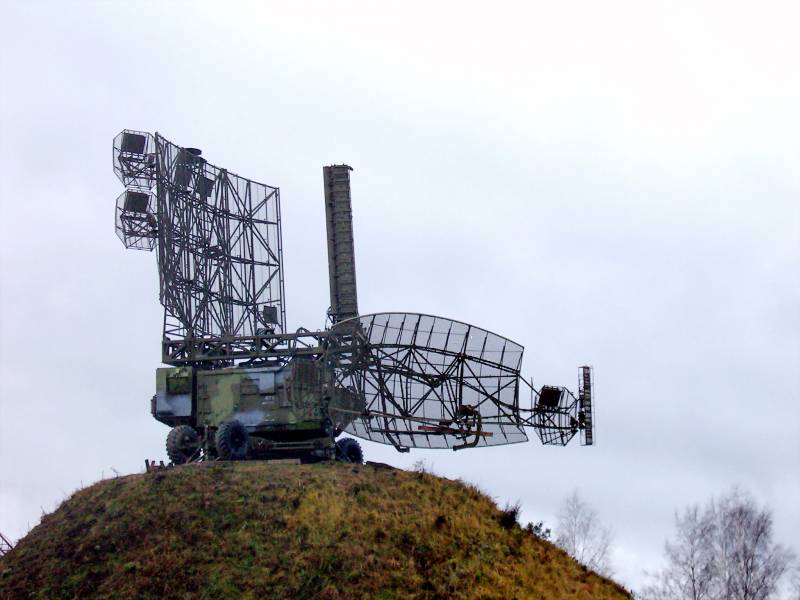
Three-coordinate radar 22Zh6
As of 2014, more than half of the radars controlling the airspace over the territory of Ukraine were Soviet-made radars: 5N84A, P-37, P-18, P-19, 35D6 and 36D6.
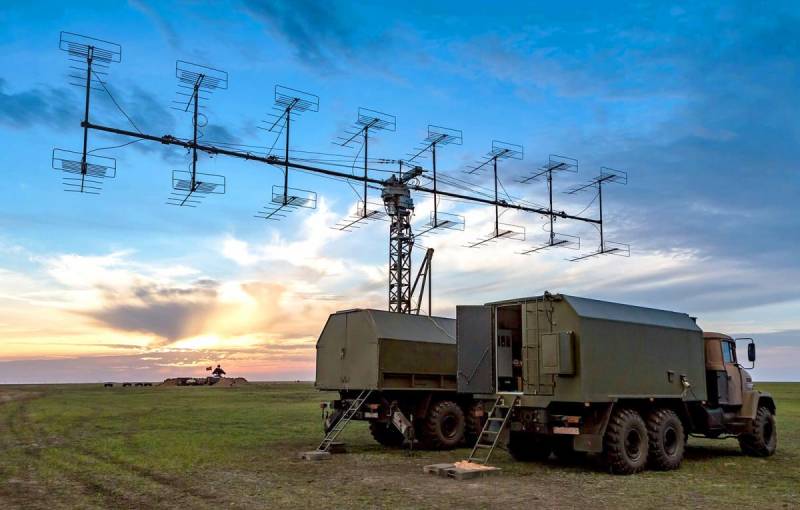
Radar P-18
The three-coordinate station 35D6 (19Zh6), operating in the decimeter frequency range, and its improved modification 36D6 were one of the best late Soviet radars that are capable of detecting targets flying at low altitudes. At these stations, the antenna post with a rotary device and the radar control cabin were mounted on a single semi-trailer.
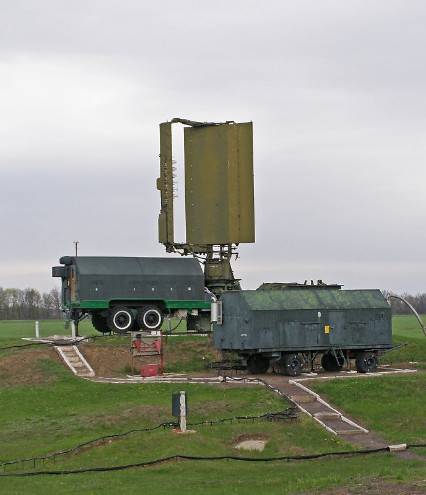
Radar 35D6
The construction of 35D6 / 36D6 radars was carried out at the State Enterprise "Scientific and Production Complex" Iskra "in Zaporozhye. This enterprise was one of the few in Ukraine whose products were in steady demand on the world arms market.
Until February 2022, Iskra was assembling upgraded mobile three-coordinate survey radars 36D6M (36D6M-1).
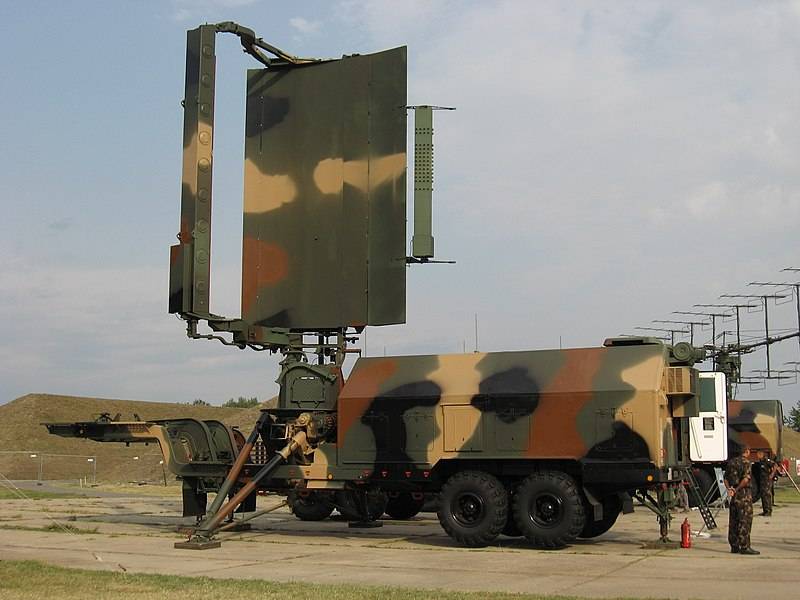
Radar 36D6
These stations are currently among the best in their class and are used in modern automated air defense systems, anti-aircraft missile systems to detect low-flying air targets covered by active and passive interference, to control military and civil air traffic aviation. If necessary, 36D6M operates in the mode of an autonomous control point. Detection range - up to 360 km.
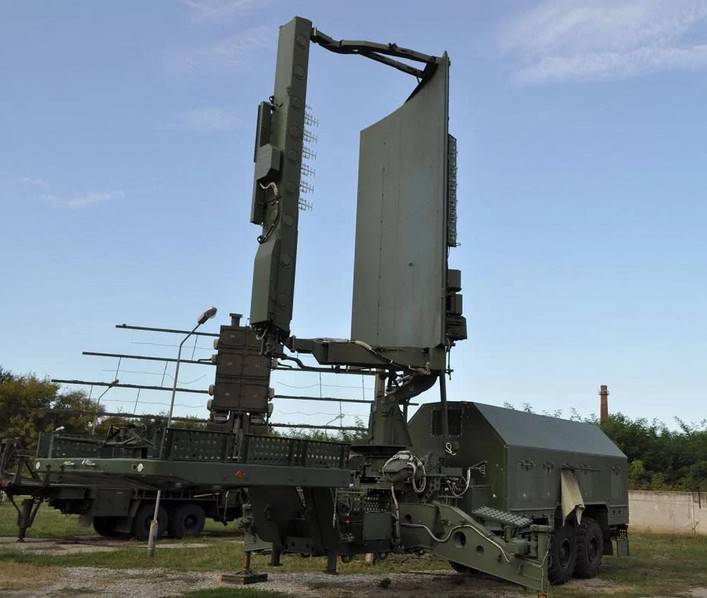
To transport the radar, tractors KrAZ-6322 or KrAZ-6446 are used, the station can be deployed or collapsed within half an hour. Radars of this type were supplied to Vietnam, Georgia and the USA in the 36st century. One of the largest buyers of the 6DXNUMXM radar is India.
In parallel with the construction of new radars, the Soviet 35D6 radars were modernized to the level of 35D6M. Over the past few years, the Armed Forces of Ukraine have received several upgraded stations per year.
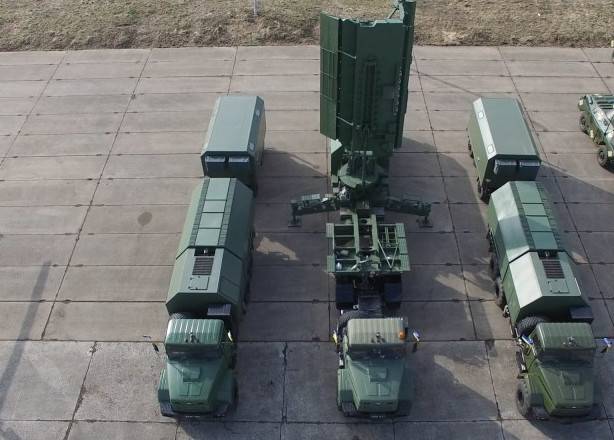
As stated by the representatives of KP NPK Iskra, the upgraded 35D6M radar is not much inferior to the new 36D6M-1 in its capabilities and has improved performance when working in mountainous areas.
Back in Soviet times, the development of a mobile three-coordinate all-round radar with a phased antenna array 79K6 Pelican began at the Iskra Scientific and Production Complex. However, due to insufficient funding, the first prototype was created only in 2006. In the same year, state tests were carried out, and in the summer of 2007, the 79K6 radar was officially put into service.
The station is intended for use as part of the Air Defense Forces and the Air Force as an information link for monitoring and issuing target designation to anti-aircraft missile systems and automated air traffic control systems. Initially, the radar was placed on the chassis of two heavy off-road trucks, but a towed version was subsequently created.
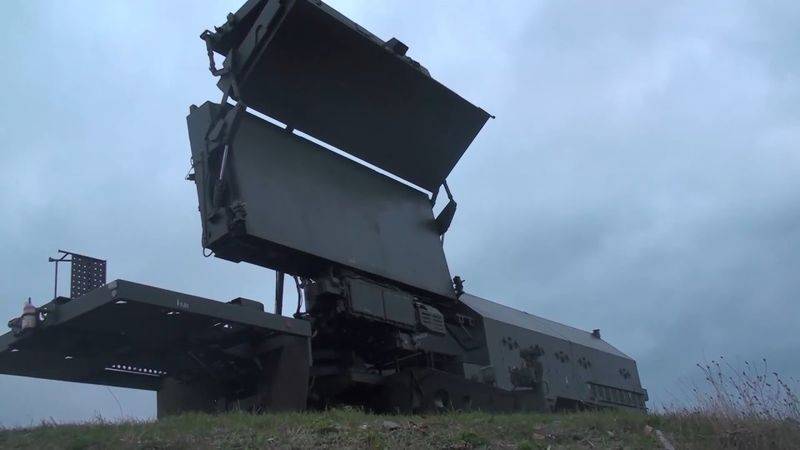
RLS 79X6
The radar deployment time is 30 minutes. The maximum detection range of large high-altitude targets is 400 km. The detection range of a fighter-type target at a flight altitude of 100 m is 40 km, 1 m is 000 km, and 110 km is 10 km.
The export version of the 79K6 radar was designated 80K6, and the upgraded version with a detection range of up to 500 km was designated 80K6T. Station deployment time is 15 minutes.
In 2013, the 80K6M radar was introduced, all elements of which were placed on a wheeled chassis.
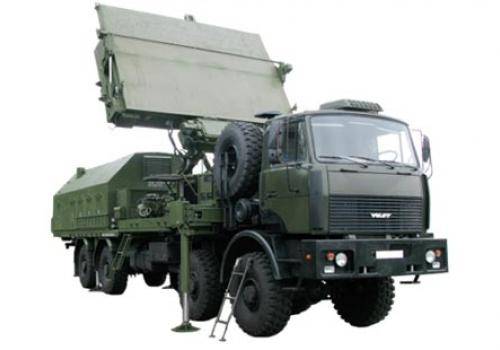
80K6M radar
At least one 80K6M radar was delivered to Azerbaijan, where it was demonstrated at a military parade.
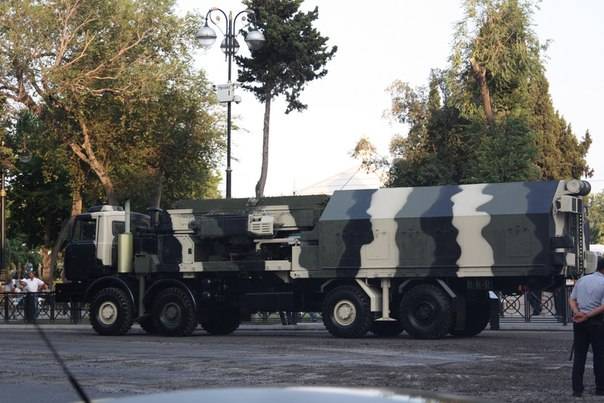
In September 2014 at the exhibition "Weapon and Security 2014” demonstrated the 80K6K1 radar to the general public.
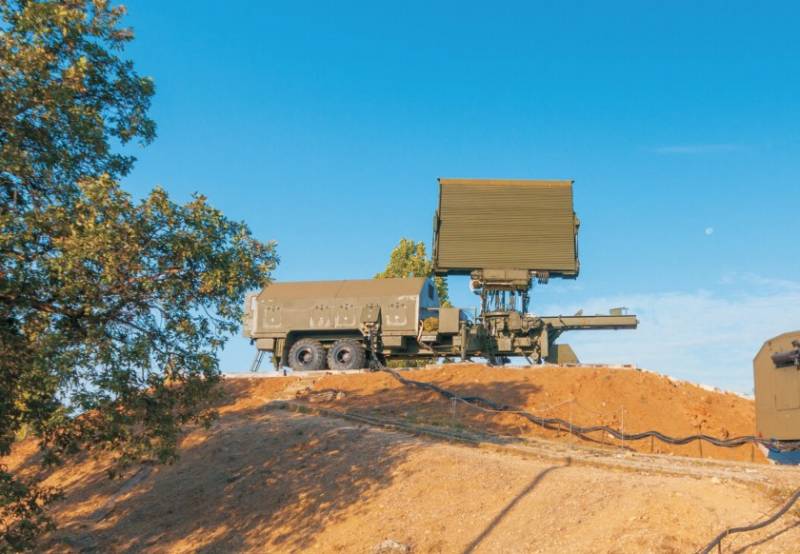
The deployment / collapse time of the 80K6K1 radar is 6 minutes. Instrumental range - 400 km, detection range of targets of the "fighter" type at an altitude of 3 m - 000 km.
In parallel with the creation of new radars, the Ukrspetstekhnika enterprise carried out the modernization of the Soviet P-37, 5N84, P-18 and P-19 radars. All these stations are two-coordinate, they are designed to detect air objects, determine their current slant range and azimuth.
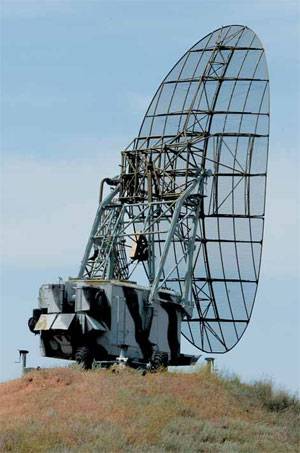
PRV-13
For accurate measurement of spatial coordinates, they can be paired with altimeters PRV-11, PRV-13, PRV-16 and PRV-17.
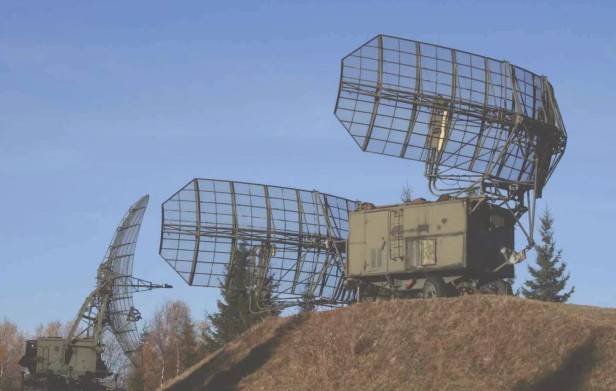
P-37 radar and PRV-13 radio altimeter
In 2007, a program for the development of radar weapons was adopted, according to which by 2015 the equipment of the RTV of the Ukrainian Air Force with new and modernized equipment should have been at least 70%. It was not possible to complete the program in full, but nevertheless, a significant part of the Soviet-built stations was overhauled and modernized.
The main areas of modernization were: a partial transition to a modern element base, the introduction of digital signal processing, the use of modern means of displaying and transmitting information, as well as the restoration of the main components and mechanisms with an extension of the resource.
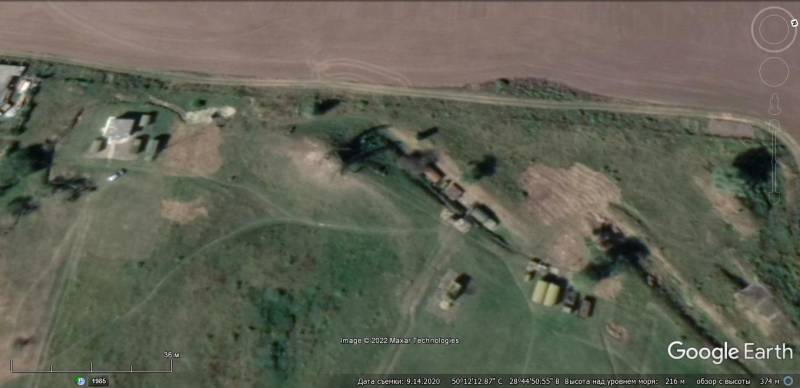
Satellite image of Google Earth: P-37 radar at a position near Zhytomyr, the image was taken in 2020
One of the most common in the post-Soviet space is the P-37 standby radar. The station operating in the frequency range 2 830-3 010 MHz has a detection range of up to 350 km. Pulse power - 700 kW. The information is updated every 10 or 20 seconds. Deployment time - 8 hours.
Due to the ability to carry out long-term duty, P-37s were used for air traffic control. When paired with radio altimeters, these radars are capable of providing guidance to fighter-interceptors and issuing target designations to anti-aircraft missile systems.
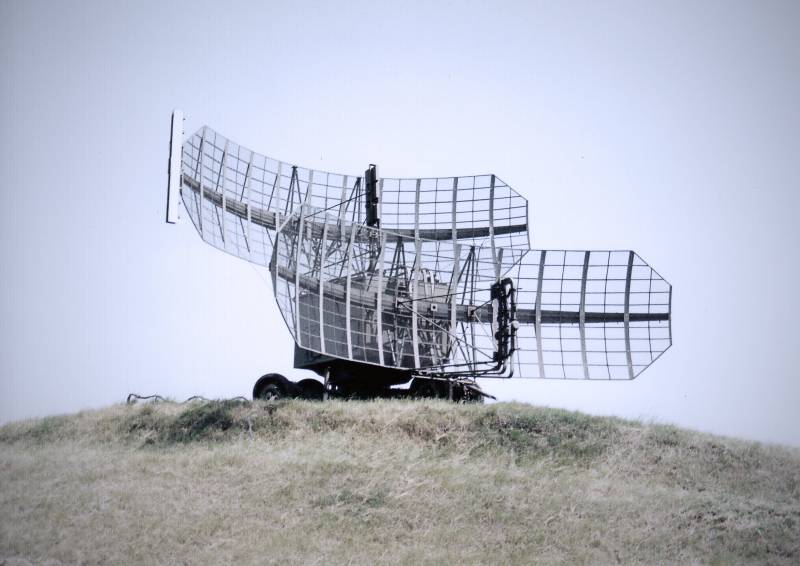
The P-37 radars available in Ukraine were produced between 1980 and 1991, a significant part of them required repair by 2005. Unfortunately, we could not find detailed information about the modernization of the P-37 for the Armed Forces of Ukraine, but a number of sources say that for several Ukrainian stations of this type, the resource was extended for another 10 years at the factory.
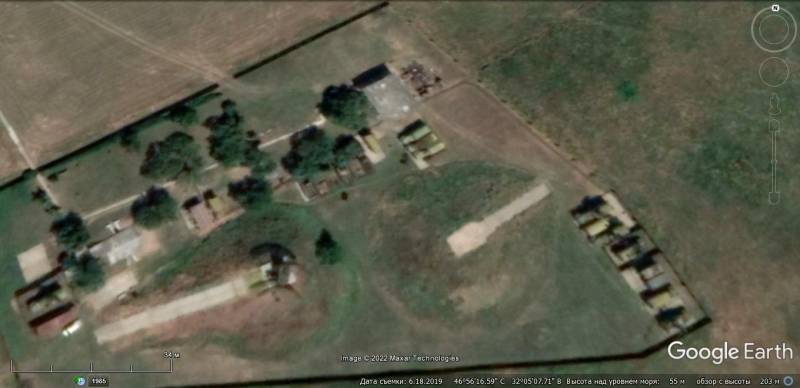
Satellite image of Google Earth: P-37 radar at a position near Nikolaev, the picture was taken in 2019
In Soviet times, the P-14 Lena (stationary) and P-14 Van (transportable) meter-range radars were widely used. Radar 5N84A "Defence-14" is an evolutionary version of the development of the P-14 radar.
The 5N84A standby radar was designed to control airspace, detect, determine the coordinates, speed and flight path of air targets at long ranges and altitudes with high resolution in conditions of intense radio countermeasures when working as part of an air defense control system and an air traffic control system. The 5N84A station, which delivered up to 800 kW of power in a pulse, confidently detected a fighter flying at an altitude of 10 km at a distance of more than 300 km. The information was updated every 10 or 20 s.
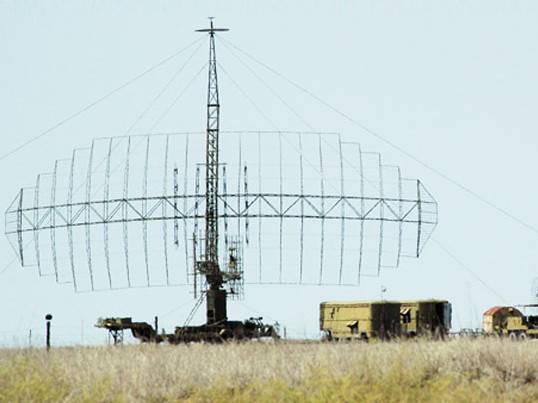
Radar 5N84A
The antenna mirror span is 32 m, height is 11 m. The station is located on six transport units (two semi-trailers with equipment, two with an antenna-mast device and two trailers with diesel generators for power supply). A separate semi-trailer has a remote post with two indicators.
It took more than two days to relocate, and in fact the 5N84A radar was a “peacetime” station, very vulnerable to enemy fire. At the same time, until recently, the United States did not have anti-radar missiles capable of targeting meter-range radars with sufficient accuracy, which partly compensated for their bulkiness and poor mobility.
The Ukrainian version of the 5N84AMA radar was put into service in 2011. During the modernization, a transition was made to a modular design and a new element base, which made it possible to increase the reliability of the station and reduce energy consumption. The number of operating frequencies and noise immunity have increased. The upgraded radar has the ability to automatically track targets, as well as receive data from other stations. Complete with 5N84AMA, the use of modernized PRV-13 and PRV-17 radio altimeters is provided.
In Ukraine, several options have been developed for upgrading the P-18 mobile meter-range radar with digital processing and automatic transmission of information: P-18MA (created by the Kyiv scientific and production enterprise NPP Aerotekhnika-MLT LLC) and P-18MU (made by Ukrspetstechnika) - these modifications were adopted in 2007, but, apparently, single samples were presented. A deeply modernized modification of the P-18 "Malachite" from the company "Ukrspetstekhnika", which was put into service in 2012, became mass-produced. In total, at least 30 upgraded radar stations have been handed over to the Armed Forces of Ukraine.
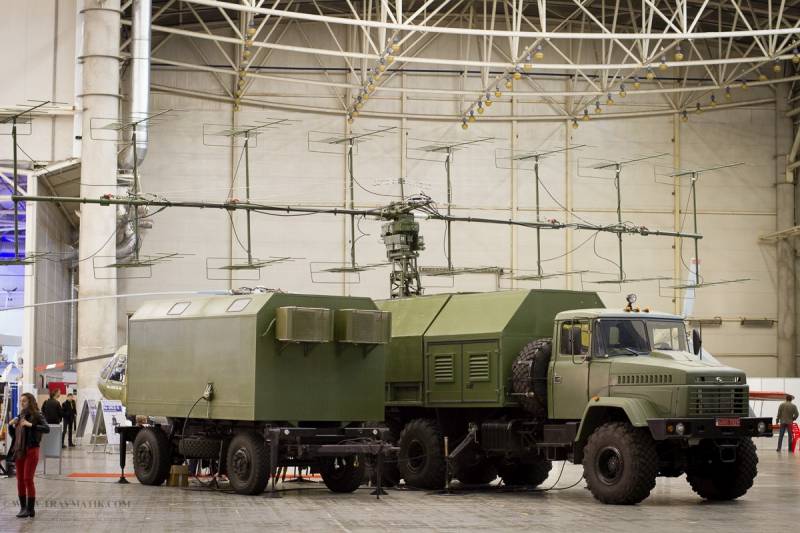
Radar P-18 "Malachite"
If you believe the developer's promotional materials, then the maximum detection range of the P-18 "Malachite" reaches 400 km. A MiG-29 fighter flying at an altitude of 10 m can be detected at a distance of 000 km. The data update rate is 280–10 s.
The operator of the upgraded radar has the ability to track targets flying at speeds up to 1 m/s and track up to 000 routes, as well as automatically transmit data on detected air targets. Compared to the basic P-256, the dimensions of the upgraded version of the radar have been significantly reduced. The radar station is located on the KrAZ chassis and one cargo trailer. The initial station P-18MU is based on two Ural-18 vehicles and two trailers.
As of 2005, ACS operated approximately 50 P-19 radars. On an unmodernized two-coordinate low-altitude decimeter radar, put into service in 1974, the detection range is 160 km. Ceiling - 6 m. Impulse power - 000 kW. Antenna rotation speed 300 and 6 rpm.
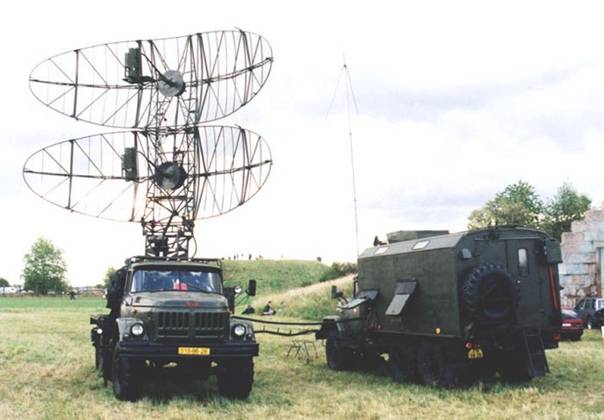
Radar P-19
The hardware machine on the ZIL-131 chassis contains radar equipment, equipment for interfacing with other radars, a radar interrogator, data acquisition and transmission units, as well as a set of measuring and communication equipment.
In 2007, the P-19MA radar, modernized by Aerotekhnika-MLT, entered service with the Armed Forces of Ukraine. In the course of modernization, the station was transferred to a modern solid-state element base, coupled with computing facilities. As a result, power consumption has decreased and time between failures has increased, detection characteristics have improved, and the ability to automatically track the trajectories of air objects has been implemented.
The station ensures the reception of data from other radars, the exchange of radar information occurs through any data exchange channels in an agreed exchange protocol. It is stated that the field of view has been increased to 300 km, the measurement accuracy and noise immunity have been improved, and the operating frequency range has been expanded. MTBF increased from 100 to 300 hours.
The Ukrspetstechnika company in 2012 offered an upgraded P-19MU radar. The detection range is the same as on the P-19MA, but the ability to work with objects with low radar visibility has improved, and this station is equipped with new means of displaying and processing information.
As of 1991, the air defense brigades of the Ground Forces stationed in Ukraine had a number of two-coordinate standby radars 1L13-3 "NEBO-SV", operating in the meter frequency range.
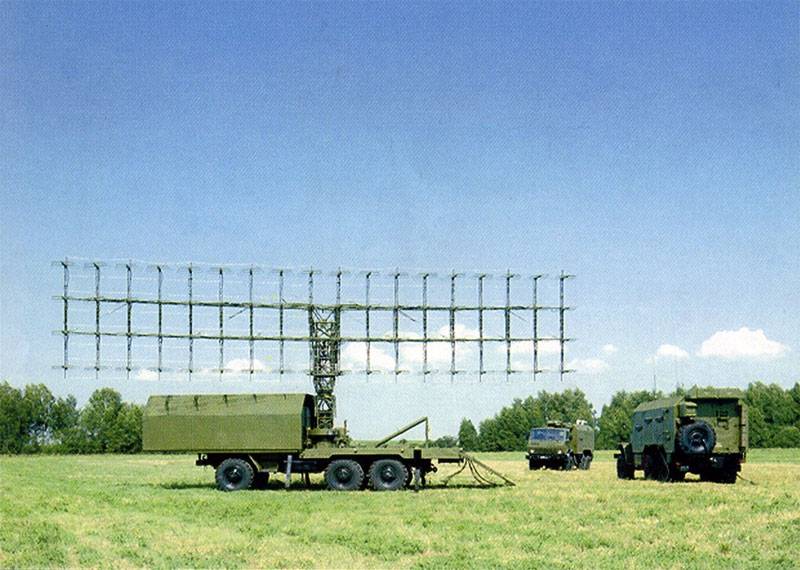
Radar 1L13-3 "NEBO-SV"
The NEBO-SV radar entered service in 1986. The station includes: an antenna-rotary device, a hardware post and a power station on a car platform, as well as a radar interrogator on a car trailer. With a pulse power of 120 kW, the detection range of a fighter-type target flying at an altitude of 100 m was 29 km, at an altitude of 10 km - 275 km.
In 2012, the Aerotekhnika-MLT company began the refurbishment of stations of this type and partial modernization. In addition to improving reliability, the maximum detection range was increased by about 20%, the accuracy of measuring coordinates increased, and it became possible to form up to 150 traces. According to available information, the Air Force of Ukraine received 6 upgraded NEBO-SV radars.
In 1987, the production of the Kolchuga electronic intelligence stations began at the Topaz plant in Donetsk. The mobile station for passive electronic intelligence "Kolchuga" is located in two vans on the KrAZ-260 chassis.
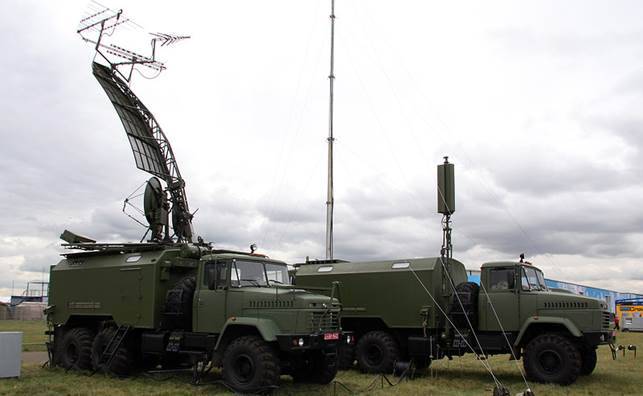
The Kolchuga complex consists of three stations. It is able to determine with high accuracy the coordinates of ground and surface targets, the routes of their movement at a distance of up to 600 km inland and 1 km along the front, and for air targets flying at an altitude of 000 km - up to 10 km. The station is capable of not only detecting, but also recognizing ground (over-the-horizon) and air targets. Various patterns of intended targets are stored in the system's memory. The Kolchuga system is difficult to detect, since it conducts reconnaissance in a passive mode, that is, it does not emit radio waves itself.
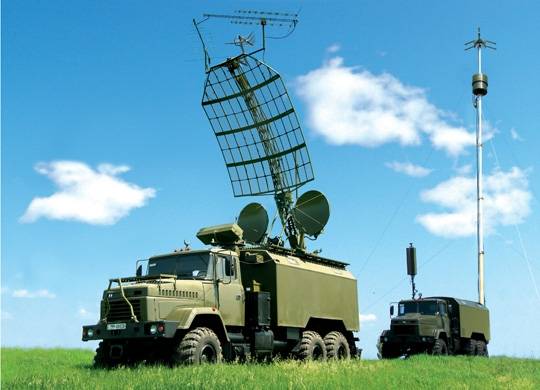
In the early 1990s, the Ukrainian armed forces had 18 Kolchuga stations. This number made it possible to fully monitor the electronic situation around Ukraine to a depth of 300–400 km. In 2001, the modernized Kolchuga-M entered service. The Armed Forces of Ukraine delivered 8 such stations, some more were converted from early hardware modifications.
After the start of the conflict in eastern Ukraine in 2014, the Topaz plant remained in the territory not controlled by Kyiv. In this regard, the production of "Kolchug" was transferred to Zaporozhye at the Iskra Research and Production Company.
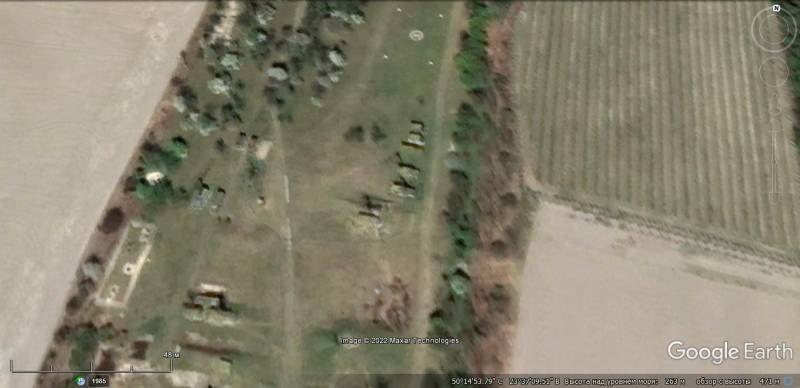
Satellite image of Google Earth: the position of the station RTR "Kolchuga" in the vicinity of the city of Rava-Russkaya, Lviv region
As of the end of 2013, about 60 permanent radar posts were deployed on the territory of Ukraine, which, in addition to other types of radars, included at least 40 three-coordinate stations 35D6 / 36D6.
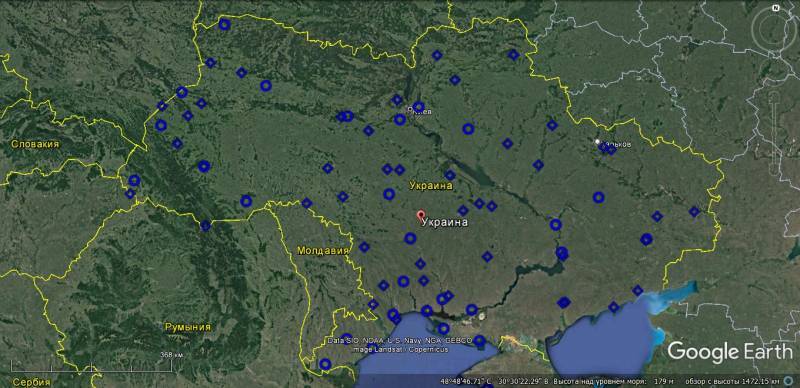
Layout of radar posts on the territory of Ukraine as of 2013, compiled on the basis of Google Earth satellite images
In the autumn of 2013, 16 radar posts functioned in Crimea, they included 6 35D6 / 36D6 radars.
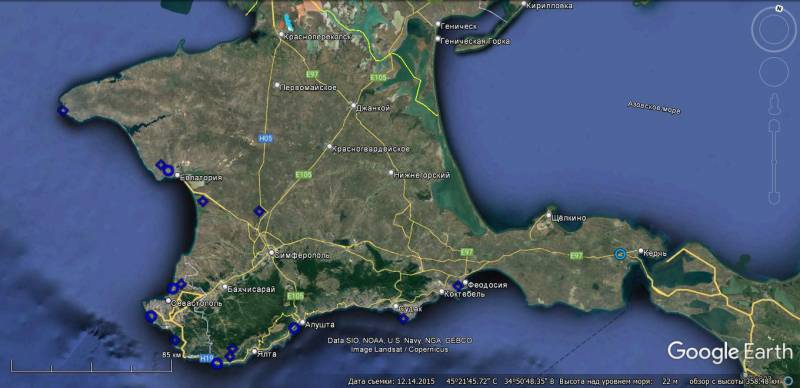
Layout of radar posts on the territory of the Crimean peninsula as of 2013, compiled on the basis of Google Earth satellite images
In the southwestern part of Crimea, near Cape Fiolent, there was a radar post as part of the 35D6 radar and several Kolchuga electronic intelligence stations. After Crimea became part of Russia, mobile radar systems were returned to Ukraine.
The conflict in the east of the country has created gaps in Ukraine's radar field. Part of the RTV equipment of the Armed Forces of Ukraine was lost during the hostilities. So, on the morning of May 6, 2014, as a result of an attack on a radio engineering unit in the Luhansk region, one radar station was destroyed. The Ukrainian RTV suffered the next losses on June 21, 2014, when a radar station in Avdiivka was destroyed as a result of shelling from mortars.
Observers note that part of the Ukrainian radar 35D6/36D6, P-18 and P-19 was relocated from the western regions of Ukraine to the east of the country. These stations were mainly intended to control the flights of their combat aircraft in the zone of armed conflict.
State of the RTV of the Armed Forces of Ukraine after 2014
As already mentioned, along with the improvement of radars built and developed in the USSR, the design bureau of KP NPK Iskra was creating new radar equipment. But, apparently, the development of new radars was not easy. Thus, the 79K6 radar, which was handed over for testing in 2007, was first used in large-scale military exercises of the Armed Forces of Ukraine only in October 2016.
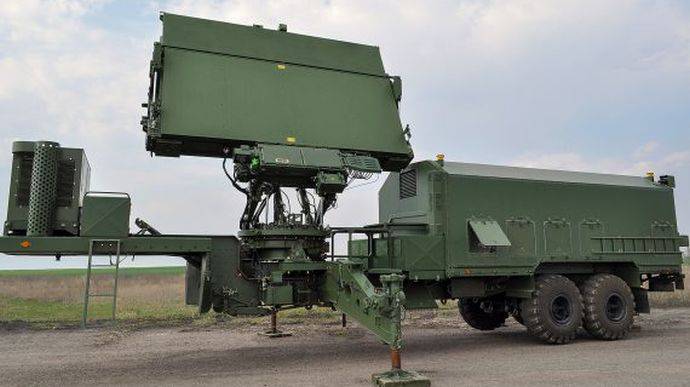
In September 2021, the 80K6KS1 Phoenix-1 station, located on a car chassis, entered service. This locator in the Armed Forces of Ukraine was supposed to replace the 9S18M1 Kupol-M1 combat mode radar (range up to 160 km), attached to the Buk-M1 air defense system.
The characteristics of the "self-propelled" radar 80K6KS1 were not disclosed, but most likely, the detection range approximately corresponds to the towed modification 80K6K1, which is much more than that of the standard 9S18M1 station on a tracked chassis. However, the use of a heavy wheelbase imposes certain restrictions on mobility. Wheeled vehicles are significantly inferior in terms of off-road patency to 9A310M1 self-propelled firing systems and 9A39 launchers.
However, the Ukrainian industry failed to produce a significant number of Pelican and Phoenix radars, and, apparently, we can talk about three or four radars of this type supplied to the troops.
Nevertheless, thanks to the release of new radars and the modernization of Soviet-built stations, Ukraine has managed to maintain a good level of equipment for radio engineering units in the Air Force.
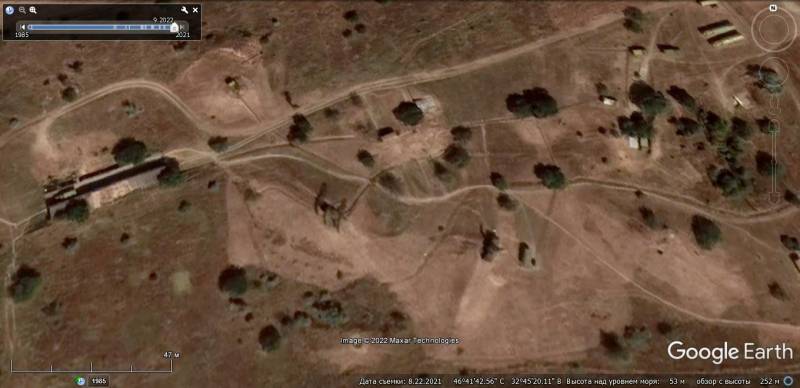
Satellite image of Google Earth: P-37 and P-19 radars at a position near Kherson, the image was taken in 2021
As of February 2022, radar posts monitored the airspace around the clock at medium and high altitudes over the entire territory of the country.
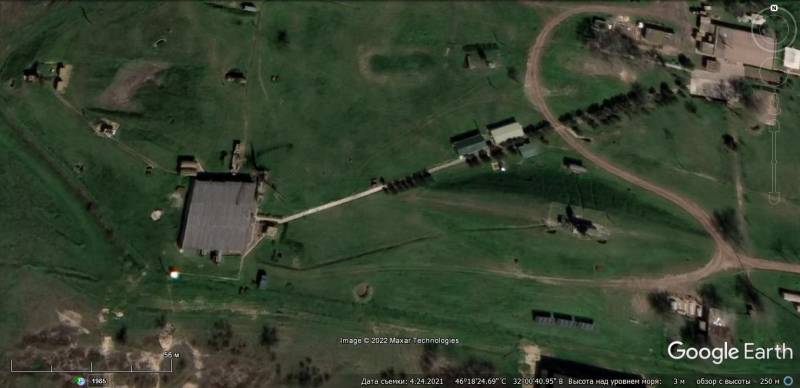
Satellite image of Google Earth: radar 5N84A and 36D6 in the vicinity of the village of Aleksandrovka, Kherson region
At the end of February 2022, most of the Ukrainian P-37 and 5N84A radars and associated radio altimeters located in stationary positions were destroyed by missile and air strikes or as a result of shelling from the ground during the offensive of Russian troops.
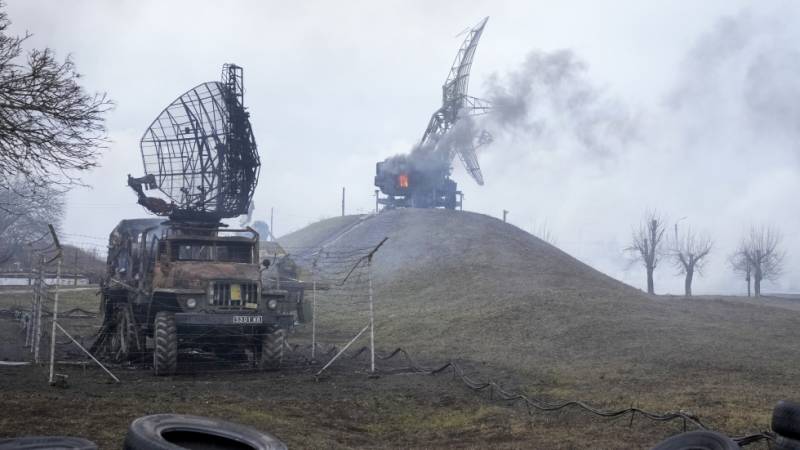
After that, numerous frames with burning and broken Ukrainian radar equipment got into the network.
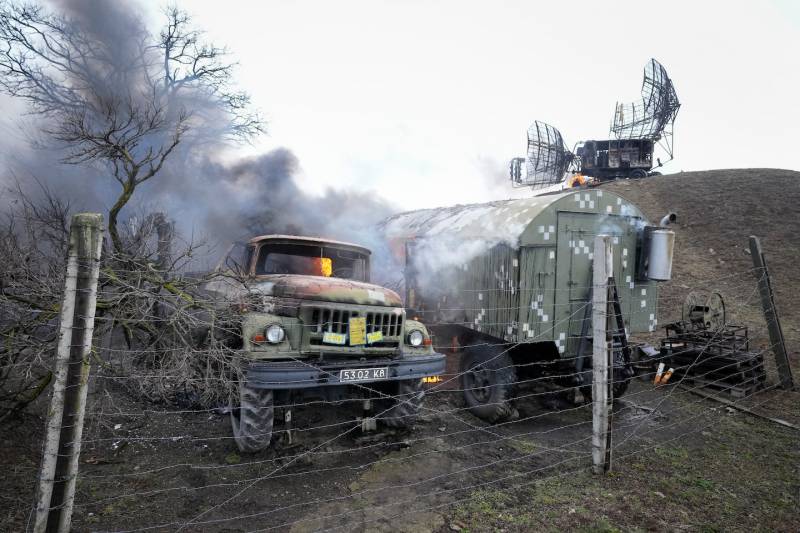
The rapid destruction of the old bulky radars, which took from 8 to 60 hours to collapse, was quite predictable. The location of most of the stations operating in the centimeter and decimeter frequency ranges: P-37, PRV-13, PRV-16 and PRV-17, did not change for 30 years, and the 5N84A radar with huge antennas of the meter range were in positions where As early as the 1960s and 1970s, P-14 radars and P-80 radar systems began to operate.
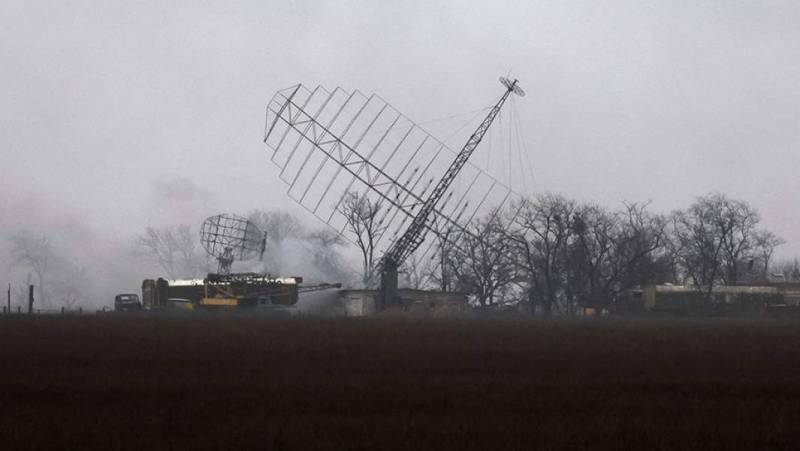
However, the Ukrainian military managed to withdraw most of the mobile radars from the attack, and they were saved in the first days of the war. In the future, the surviving radars created many problems for the Russian aviation involved in a special military operation. The Radio Engineering Troops of the Air Forces of Ukraine demonstrated good survivability and tactical flexibility, covered the air situation, issued target designation of air defense systems and corrected the actions of their aviation. Which ultimately had a certain impact on the course of the military campaign.
Tactics of using RTV APU
Before starting a conversation about the tactics of using and working methods of the radio engineering troops of the Armed Forces of Ukraine in the conditions of air supremacy of the Russian Aerospace Forces, it should be said that the highest command level of the Ukrainian Air Force in Soviet times was trained in the same educational institutions as the Russian generals who planned actions of our front-line and army aviation. Both sides were informed about the capabilities and combat techniques of the air defense forces and the RTV providing information support. Both sides had an idea of what means and methods should be used to extinguish enemy radars and anti-aircraft missile guidance stations, but the conclusions from this information were not the same.
At the initial stage of the NMD, the Ukrainian air defense forces in general and the RTV in particular were largely suppressed and disorganized. But soon, after the Ukrainian command recovered from the initial shock, the actions of the radio engineering troops took on an organized character.
At this point, it is worth dwelling on the myths that circulate in the Russian segment of the Internet and even sometimes break through into the official media. Most often, Russian "patriots" explain the failures of our military aviation by the fact that Ukraine receives real-time information about the air situation via the Starlink global satellite network and transmits data on the course, flight altitude and composition of the airborne strike groups to the few Ukrainian air defense systems that have escaped destruction. RF. This information allegedly comes from American E-3 Sentry AWACS aircraft patrolling over NATO countries and neutral waters, from reconnaissance satellites and a dense network of radars deployed in areas bordering Ukraine.
Let's start with the fact that, for all their merits, Starlink terminals are only suitable for solving limited tactical tasks related to receiving, transmitting or displaying graphic information, and cannot be effectively used for centralized control of an air defense system. In addition, it turned out that the civilian Starlink system is still vulnerable to Russian electronic warfare.
Looking at the map of Ukraine and its surrounding territories, it is easy to understand that a long-range radar patrol aircraft can fly over part of the Black Sea, Romania, Hungary, Slovakia and Poland without the risk of being destroyed.
Even if the AWACS aircraft “touches the wing” of the Ukrainian border (which is unsafe), it will be able to detect large high-altitude targets over Ukraine at a distance of no more than 700 km, and tactical aircraft operating at low altitudes at a distance of about 400 km. Since there are more than 450 km along the shortest path from the Polish border to Kyiv, the air patrol is at best able to control 1/3 of the Ukrainian airspace, and mainly these will be the western regions of Ukraine. Taking into account the fact that 5-6 AWACS aircraft will have to be kept in the air to organize continuous round-the-clock patrols, this task is difficult to implement and does not make much sense.
After the start of the NMD by Russia, Slovakia, Hungary, Romania, and especially Poland, for security purposes, pulled up to the border with Ukraine part of their radars, which had previously been on duty in other areas. But, for example, the most "long-range" Polish mobile radar NUR-12 is able to see large civil airliners flying at an altitude of about 10 km, at a distance of just over 300 km, and the MiG-29 fighter, performing a low-altitude flight, at a distance of 60–70 km . Given the range of detection, radars located in NATO countries bordering Ukraine can do little to help Ukrainian air defense.
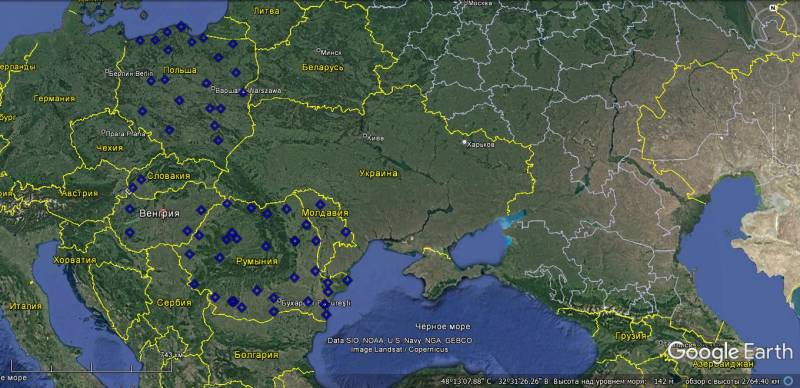
Layout of radar posts in Romania, Moldova, Hungary, Slovakia and Poland as of the end of 2021
Speaking of Western reconnaissance satellites, it should be recognized that they are capable of quickly detecting launches of cruise and operational-tactical ballistic missiles, notifying Ukrainian air defense command posts about this. There is a possibility that in a cloudless sky, reconnaissance satellite cameras can record combat aircraft taking off from the airfield. But the satellite equipment is not capable of tracking mass flights of front-line aviation and cruise missiles, all the more there is no way to issue target designation to air defense systems and fighter-interceptors.
However, when used in combination, NATO radar, electronic and satellite reconnaissance means, of course, increase the awareness of Ukrainian air defense command posts.
To make it clearer how Ukrainian air defense systems detect aircraft, Drones and cruise missiles, one should talk about the capabilities of domestic air defense systems in terms of independent search for air targets. For example, the SNR-75 missile guidance station of the very widespread Soviet S-75 anti-aircraft missile system, in addition to the "narrow beam" (5x5 °), had a "wide beam" (20x20 °). When escorting a target “on the way”, the guidance officer saw everything that was happening in the 20x20 ° sector, including his own missiles, other aircraft, launches of the PRR. This increased situational awareness and drastically reduced the time for additional reconnaissance of the target. In the "wide beam" mode, it was also possible to independently survey the airspace, but this method was used in emergency cases when there was no external target designation.
Under normal conditions, the guidance station, immediately before the target is captured on the air, does not emit anything and does not unmask itself. Target data is received from the RTV units of the regiment or brigade to the remote indicator of the air situation, and the radiation is turned on at the command from above after receiving the target designation.
The low-altitude S-125 air defense system and the long-range S-200 worked in approximately the same way. For the S-200, preliminary reconnaissance of air targets was carried out by the P-14 or 5N84A meter-range radar. After that, the PRV-13 radio altimeter was activated, and the updated information was sent to the operators of the illumination and guidance radar, while it was possible to automatically turn the ROC antenna in the vertical and horizontal planes with the capture of an air target.
The 30N6 illumination and guidance radar, which is part of the S-300PS air defense system, significantly exceeds the first generation complexes in terms of the ability to independently search for targets. However, the greatest efficiency is achieved when working together with an airspace surveillance radar. In autonomous operations in isolation from the main forces and to increase combat stability, the division can be given three-coordinate radars 35D6 / 36D6, as well as modernized two-coordinate P-18 or P-19. This reduces the load of the calculation of the OLTC 30N6 and increases stealth. For better detection of targets operating at low altitudes, the battalion's radar facilities include a low-altitude 5N66M detector mounted on a universal mobile tower.
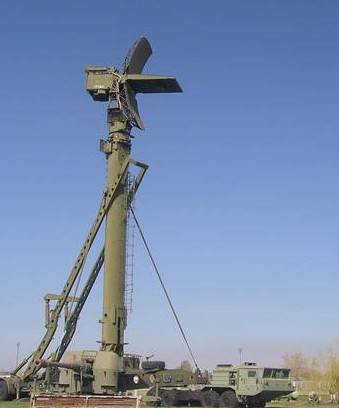
In real combat operations against an enemy with air superiority, due to low mobility and high visibility, the NVO is very vulnerable, and in Ukraine such radars could survive only in the western regions.
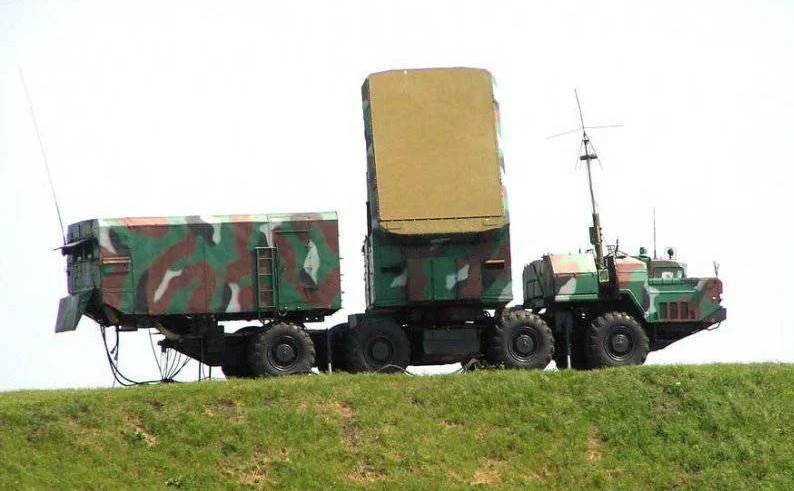
RPN 30H6
The actions of the S-300PT/PS regiment or brigade are controlled by means of controls as part of the 5K56S combat control post and the 5N64S detection radar. The combat controls of the S-300PS air defense system do not differ in composition from the controls of the S-300PT-1 system, but are based on self-propelled chassis and are able to interact with the Senezh and Baikal automated control systems that are available in Ukraine.
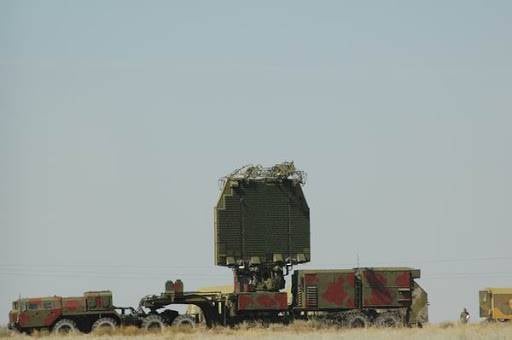
Р Р ›Рћ 5Рќ64РЎ
All elements of the 5N64S radar used as part of the S-300PS air defense system were placed on the MAZ-7410-9988 road train, and for the S-300PT they are towed by separate tractors.
Although combat duty on the Buk-M1 complex, originally intended for use in the military air defense system, is much less comfortable for personnel than on the S-300PT / PS air defense systems, each 9A310M1 self-propelled firing system is equipped with a multifunctional radar, which, in addition to guiding missiles, can be used to independently search for targets in a given sector.
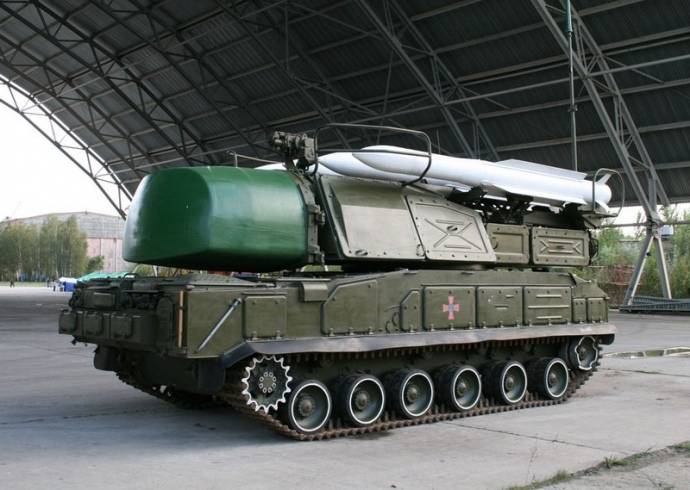
This allows the use of self-propelled launchers autonomously, although, of course, not as effective as in the battery and division.
Until a certain point, the RTV and ZRV in the Ukrainian Air Force mainly used ambush tactics. Surveillance radars located within the range of Russian aviation were turned on for a short time, and mainly at night, after which, in order to avoid destruction, they immediately changed their deployment site.
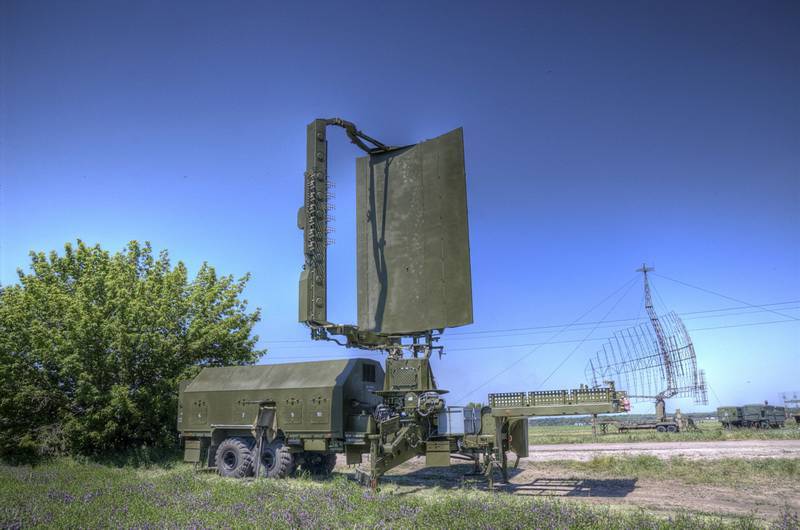
A significant role in the early detection of air targets could be played by the Ukrainian passive radio intelligence stations Kolchuga-M, which record the operation of airborne radars and radio systems. According to unconfirmed reports, they were also able to detect the work of radio altimeters of cruise missiles traveling at low altitude.
Having received a notification from the Kolchuga-M RTR stations, visual observation posts or from Western "partners", the Ukrainian radars of the duty and combat mode turned on, began an active search for targets, and by telecode using the automated control system or by voice over the VHF radio network gave out target designation to anti-aircraft guidance stations missiles. In the regions of Ukraine that are outside the range of the PRR, "roaming" radars work constantly in turn, which, taking into account the receipt of information from the radars of NATO countries operating close to the border, made it possible to create a fairly dense radar field.
After the Russian military aviation practically ceased to go deeper into the country, the destruction of Ukrainian radars became possible mainly with the help of cruise or operational-tactical ballistic missiles. But due to the fact that mobile radars are constantly changing positions, such strikes often fall into the void. At the same time, the cost of the missile itself can significantly exceed the price of a Soviet-made radar on the world arms market.
It is noteworthy that Russian combat aircraft, even at the initial stage of the NMD, when they were actively operating over the central regions of Ukraine, relatively rarely used anti-radar missiles to destroy enemy radar and air defense systems, using mainly unguided aircraft weapons, as well as bombs and television-guided missiles. Taking into account the fact that "unparalleled" Kh-58UShK and Kh-31PD launchers with a launch range of more than 200 km were actively advertised at international arms exhibitions in the past, this is more than strange.
To be continued ...
Information